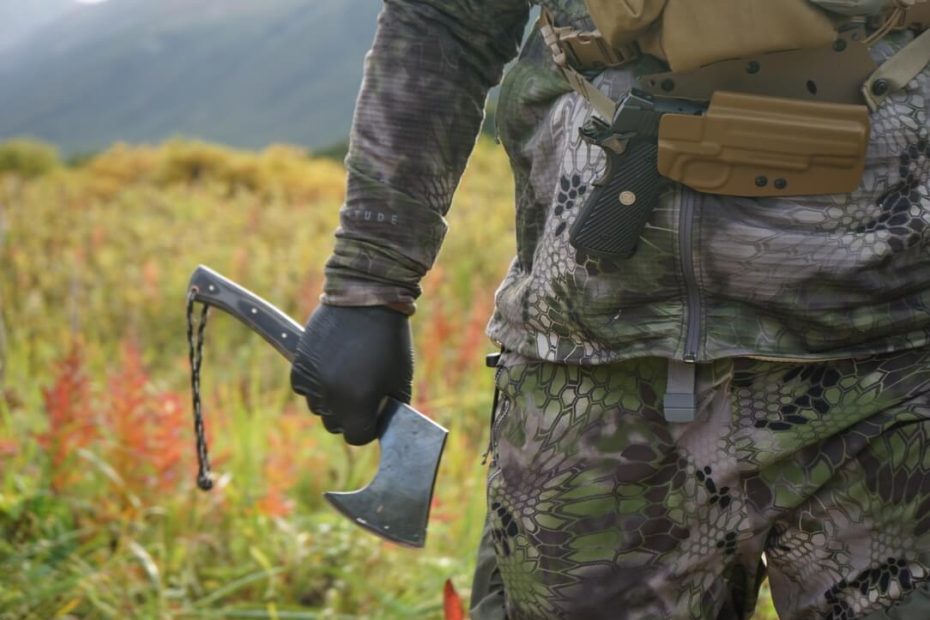“There was never a good knife made of bad steel.” – Benjamin Franklin, (probably).
The first knives made by hominids show up in archeology roughly 2.5 million years ago. They were made of stone and are among the first tools in the Stone Age. Interestingly, fire was not used until 300-400,000 years ago, meaning that we’ve been cutting meat for a lot longer than we’ve been grilling it. What was the first tool made during the bronze age? You guessed it. Roughly 4,000 years ago some clever humans in Britain smelted an alloy, shaped, hardened, and sharpened it, and thus possessed a tool and weapon that would give them a leg up on the rest of the species. Some anthropologists argue that the metal knife was the first critical step toward the eventuality of the British Empire.
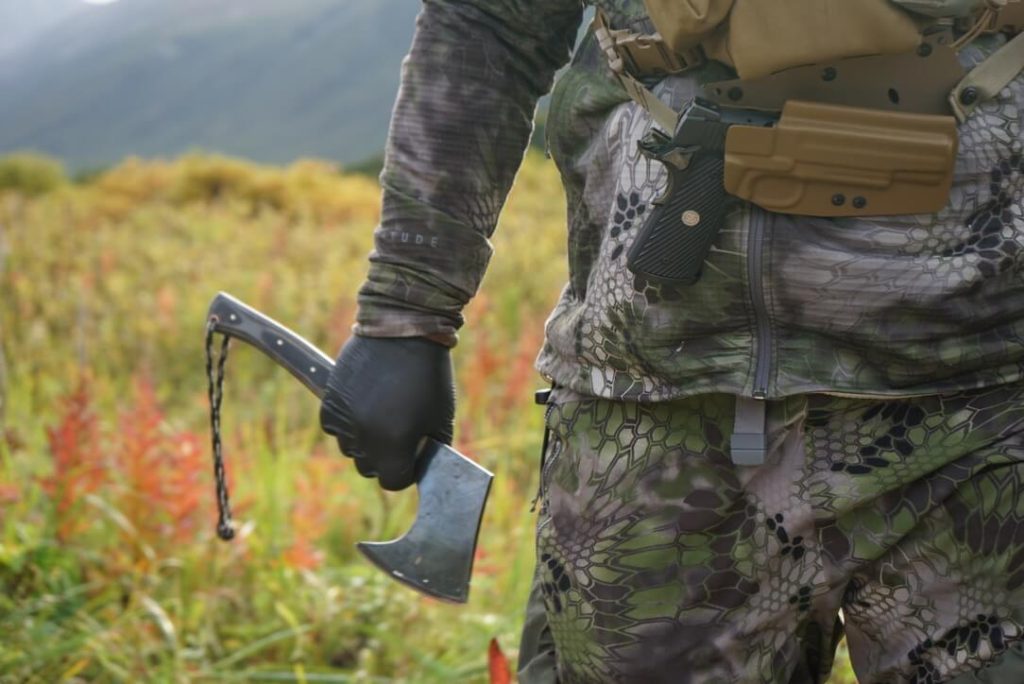
In 2009, 24 million US households owned a hunting knife. There are an ever-growing number of companies making knives, and blacksmithing is making a fashionable comeback. It can be difficult to wade through the marketing and lingo associated with all these knives so let’s break it down for today’s hunter.
We can reduce the knives I need into a few categories, and I have a favorite knife for each of them.
First is my everyday carry. That’s going to be the Argali Carbon worn around my neck, and the Benchmade Bugout I carry in my pocket. I can and have processed entire deer, elk, and bear with these two knives, but that only happens when I didn’t know I was going to be working on animals that day. Mostly they exist to open packages, trim fingernails, cut bailing twine, and dig splinters out of my mitts.
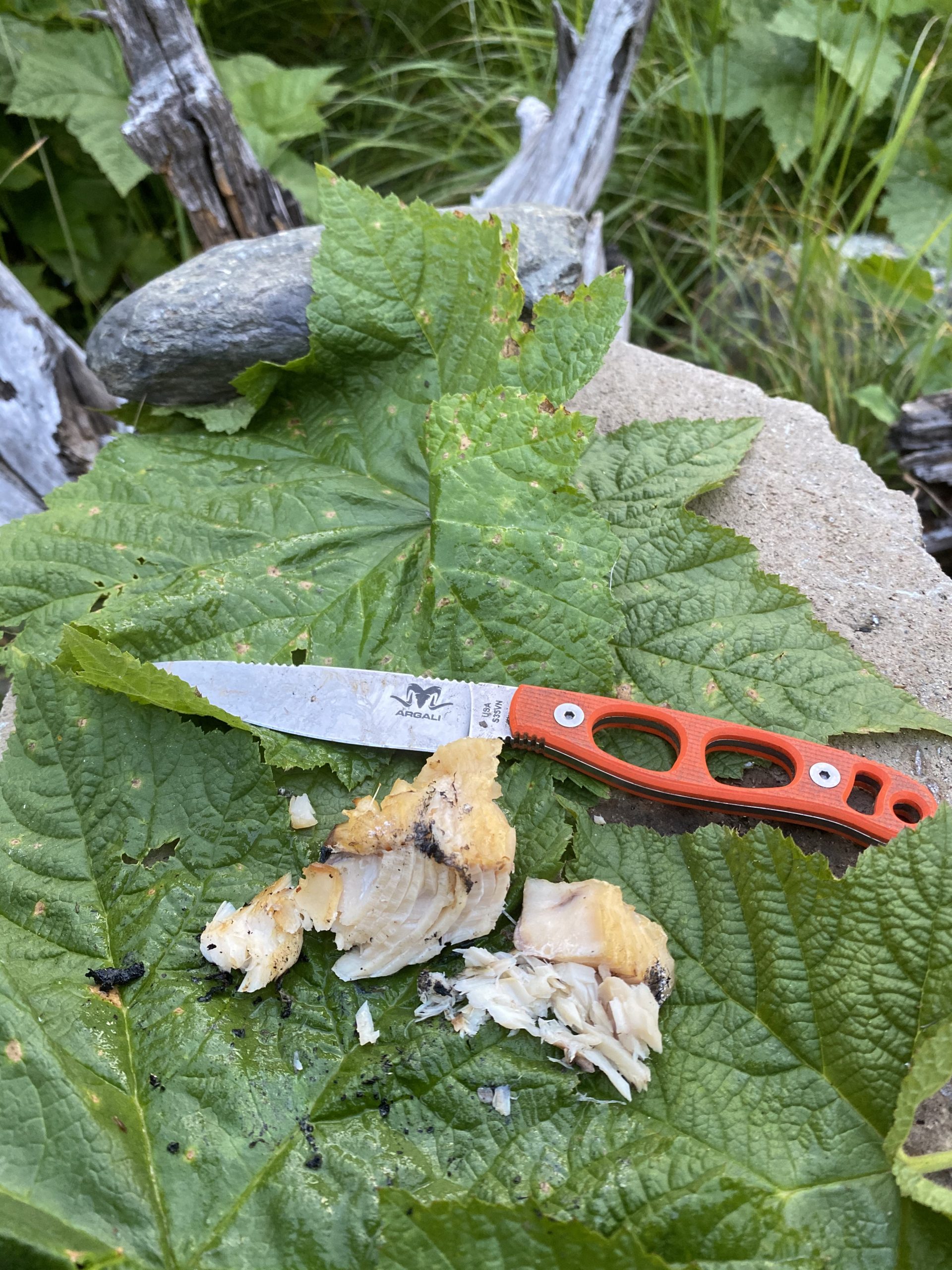
For hunting, I use the Argali Serac. Its blade design is more conducive to skinning and has a notch on the back of the blade for scraping a Ferro rod, which is my go-to method for starting fires these days because they work in every temperature and weather, work wet or dry, and can start thousands of fires. I also wear the Kodiak Belt from Argali which has a diamond plate knife sharpener on the back of the buckle, and a leather patch for stropping. I have found that a little maintenance every few minutes of cutting keeps a knife sharp forever, whereas if you let one get dull, you are going to have to dedicate a bunch of time to re-sharpening. The old adage is, “sharpen once, hone forever.” I also use an Outdoor Edge zip blade which has a dull point and a concave blade design. It’s an irreplaceable tool for making long cuts through the hide and for opening up the abdomen while gutting. Once I’m in the butcher shop I end up using inexpensive plastic handled 5-6” semi-flex boning knives for most of my cuts.

I’ve been interested in knives since I was a little guy, and have picked up a few custom knives along the way. These are special to me because I can feel a connection with the man swinging the hammer into the hot steel and leaning into the grinder to bring that steel to an edge. I value these knives the way I value memories. If you want a custom knife from a knife maker, you need to start with a conversation that describes what you intend to do with the knife. Do you want an all-purpose field knife, a skinner, or something for caping? How hard do you want the steel? This is a major concern for me. I generally prefer soft steels because my habit is to sharpen often, and soft steels become sharp quickly. Once very hard steel becomes dull, you may have to find a grinding wheel or diamond plate to get it sharp again. Conversely, harder steel might be able to make it all the way through the skinning, gutting, and quartering of an elk before it needs to be touched up. How are you planning on carrying the knife? What should the sheath be made from? Today’s thermoplastics like Kydex, which are inexpensive, easy to clean, moldable, and come in an array of colors have all but replaced leather. Talk through what you want the knife to be able to do, how long the blade and handle should be, and how you plan to carry it and you should get a fabulous product that will end up in your will.
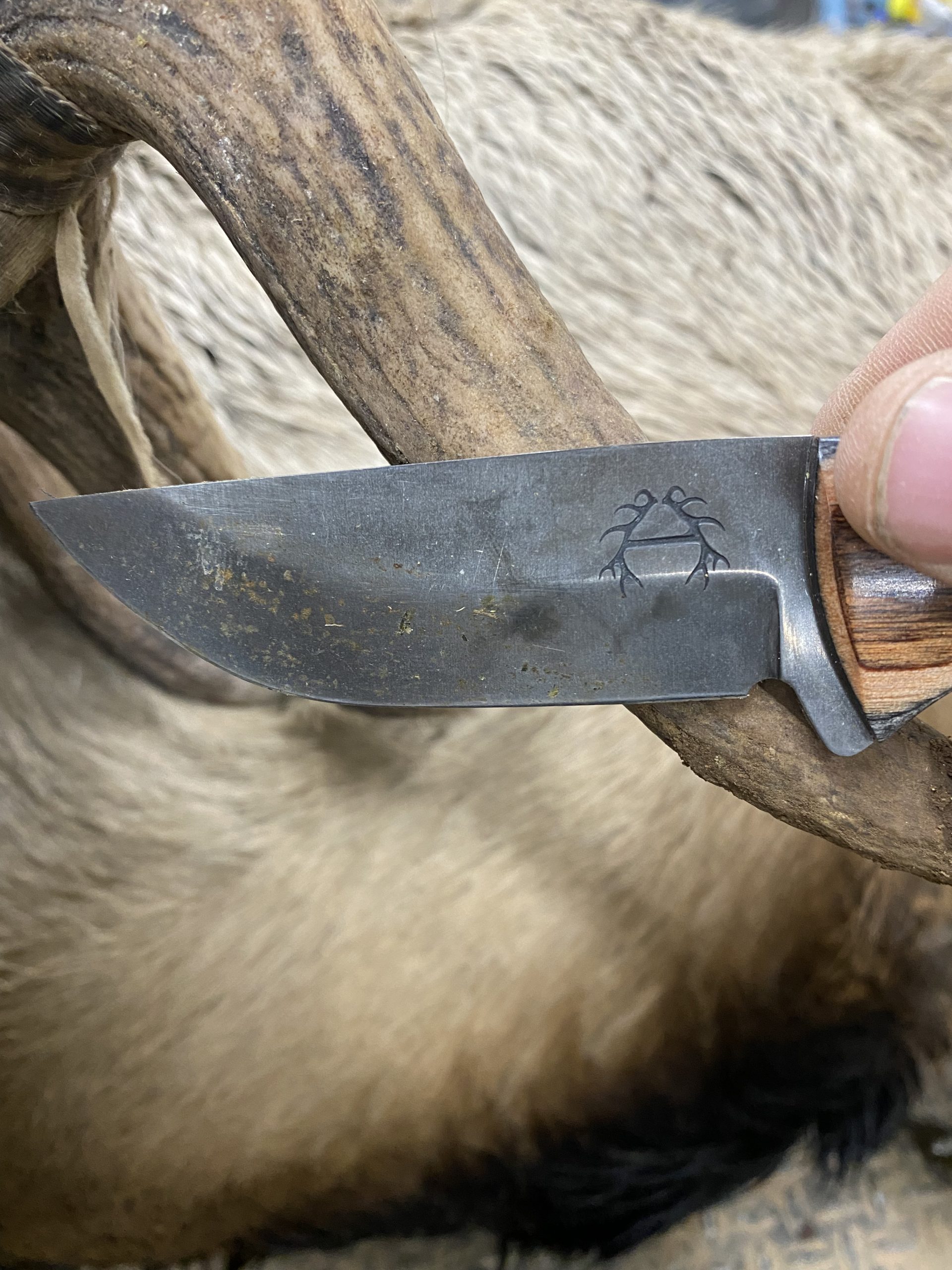
On the commercial market, you have to answer all the aforementioned questions for yourself, and then start going through the options to find what is going to work for you and your budget. While there are a pile of great knives out there, that are the result of 2.5 million years of progress, I want to go through a handful that I have used and continue to enjoy.
When I am cutting elk, deer, bear, duck, salmon, and whatever else there are a handful of other knives I also employ. One of my favorites is the Benchmade 15500 Meatcrafter. This knife is a bit long for skinning, but after that, it will do every job, from breaking to steaking, and is extremely sharp. Benchmade uses a 14-degree angle on their “select edge” and it cuts like a laser beam. I use this knife a ton in the kitchen also. That brings up the point of multiple use cases— people tend to spend more on their kitchen knives than their field knives. Of all these I’ll talk about today, the MeatCrafter is the best adapted to the field and the counter. Benchmade has several models— the 15500 costs $200.
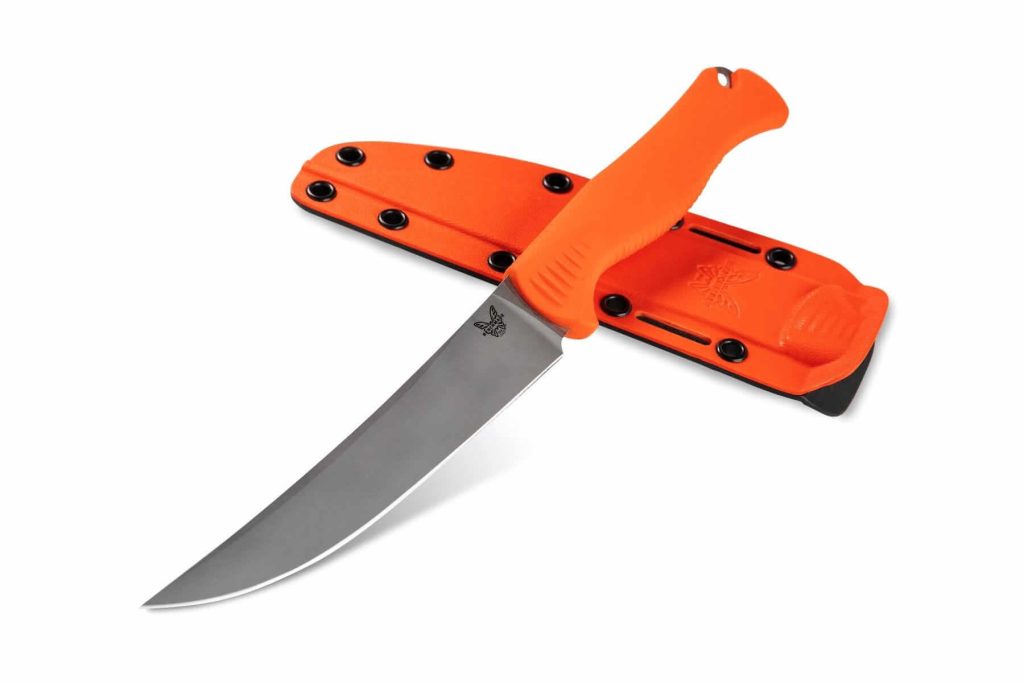
If you want a lightweight folding knife then check out the Benchmade 15535 TAGGEDOUT , also $200. This knife is slim in your pocket at less than 1/2” thick but has a 3.5” blade. The whole thing weighs a shade over 2 ounces. I cut bailing twine with mine for a couple of months and while it wasn’t hair-poppingly sharp anymore, it was still plenty sharp for every other task. My main issue with using folding knives on game is they have lots of nooks and hiding spots for chunks of organic tissue to end up in and they are a pain to clean. If you don’t do a good job cleaning, they can start smelling a little wild.
The last Benchmade I want to talk about is the Hidden Canyon skinner. It comes in a classy leather holster and has the best skinning blade contour I’ve ever used. As a general rule, the shorter the blade, the more precise the cut— a surgeon’s scalpel is a good example of this precision. The Hidden Canyon is exactly that— a precision skinning tool. It’s also really good for game birds like ducks, geese, and pheasants.
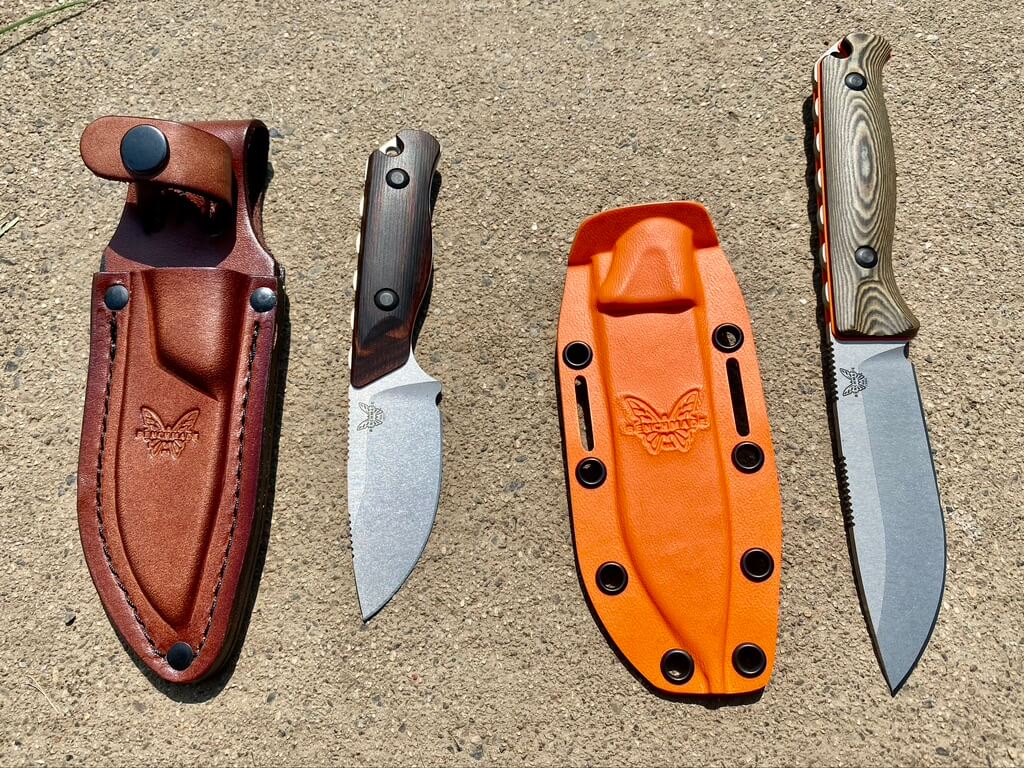
Josh Smith, a card-carrying Master Bladesmith, has done incredible things in the last couple of years with the Montana Knife Company. I recently got to put my hands on the Stonewall Blackfoot Skinner. This knife comes in at 5.5 ounces, has a G10 handle which is so tough it will someday end up in the fossil record, and has a blade design that can take on about any task you could ask of it. It also uses a steel called MagnaCut which is tougher than any of the steels used in the other knives in this article. Josh grew up in one of my favorite areas of Montana on the edge of the Bob Marshall Wilderness. I worked near there on a ranch calving out heifers while I was in college and carried a 338 WinMag with me everywhere I went for the number of grizzlies around. If people are a product of their place, then this knife, named after a river and mountain in that region, has both the place and the man as ancestors. The Stonewall is headed to Kansas with me next week and will have a place in my pack on many a hunt in the future.
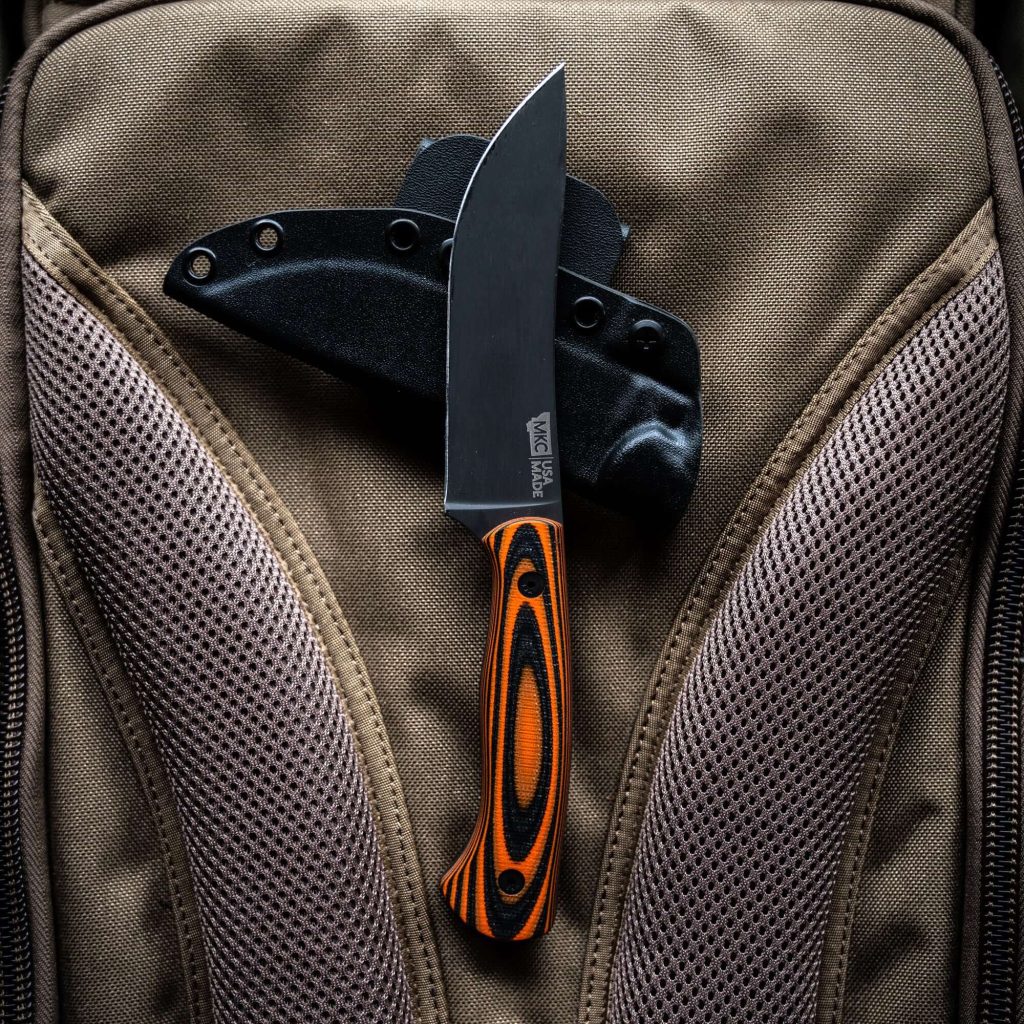
The throw-away blade knives hit the scene hard this century and as long as we have folks who don’t know how to sharpen or don’t want to, these will be part of our lives. The two I’ve used the most are the Havalon and the Outdoor Edge. These knives are relatively inexpensive up front and the blades come out of the package extremely sharp. I came within 1” of cutting my own femoral artery with an outdoor edge while skinning the lower legs of a cow elk for a client and barely felt a thing, at first. Extremely sharp and somewhat dull knives tend to be the most prone to severely injuring users. Havalon blades are famous for breaking, with the pieces springing away into who knows where, but hopefully not eyeballs. However, when used correctly they are surgical. I like Havalons for skinning coyote tails, cutting around the preorbital glands on elk and deer, and for removing the claws from bears and mountain lions. Outdoor Edge knives are much less likely to break but they get dull quickly. I cannot make it through an entire elk before the blade gets thrown in the trash. This category of knives is least likely of all to end up being passed along to a future generation.
While knives might be the most over-thought piece of gear in your kit, they are also one of the most valuable. When it comes down to it, a knife may be even more important than fire for your survival, especially since you can more easily make a fire with a knife than you can a knife with fire. The knife you have is probably good enough for the task ahead, but if you want something better, these are some great options to check out. If you want a referral to some good custom knife makers reach out to me @6ranchoutfitters and I’ll point you in a good direction.
I’ll leave you with a tradition. If someone gives you a knife, give them a coin in return. This goes back to Roman times and has been practiced in many cultures. Some believe this prevents the knife from cutting the friendship. Others believe it makes the whole affair more transactional and limits the power offset. A pro move as the giver is to tape a coin to the package containing the knife, in case the recipient doesn’t have a coin on them. Traditions are worth keeping alive and it’s a good conversation starter.
